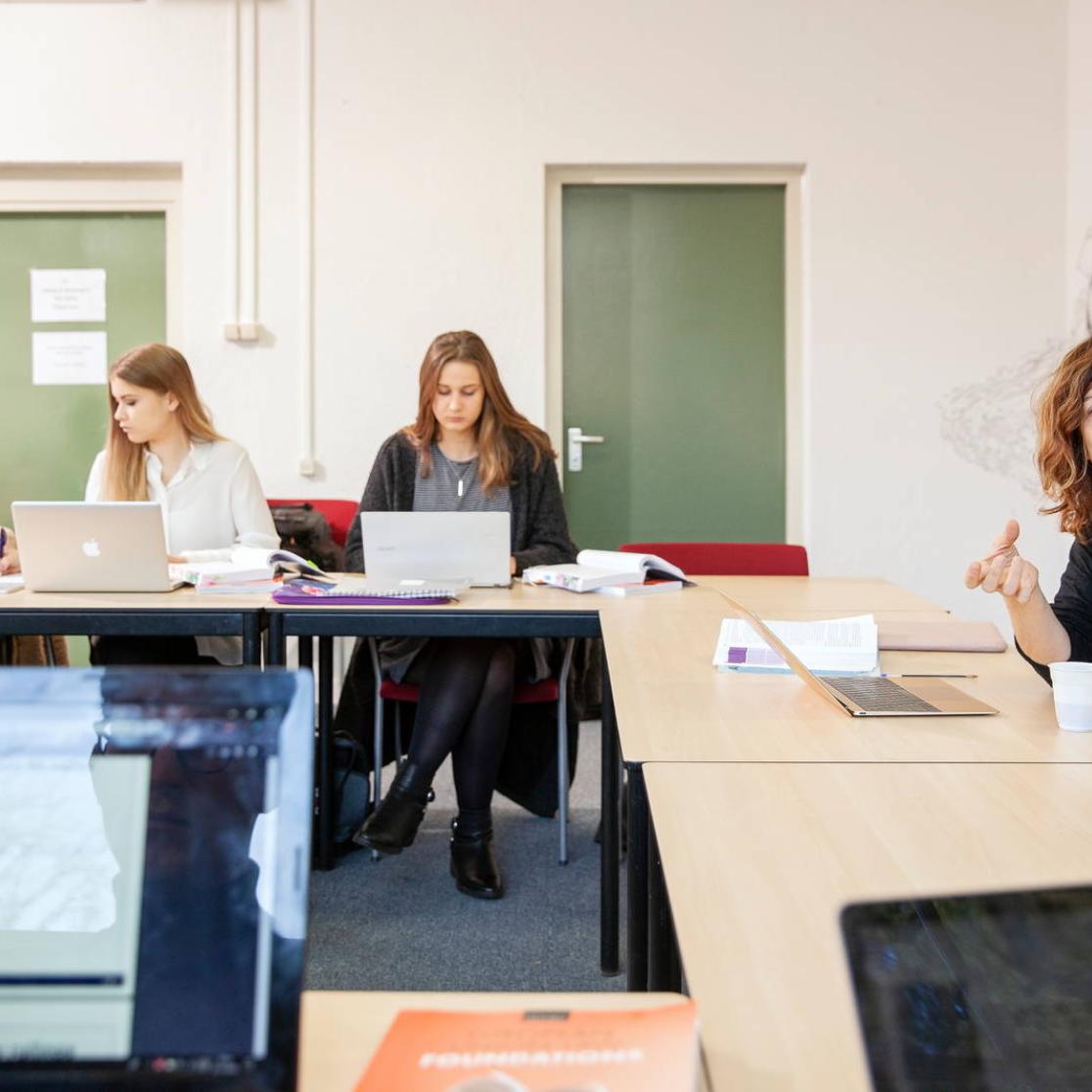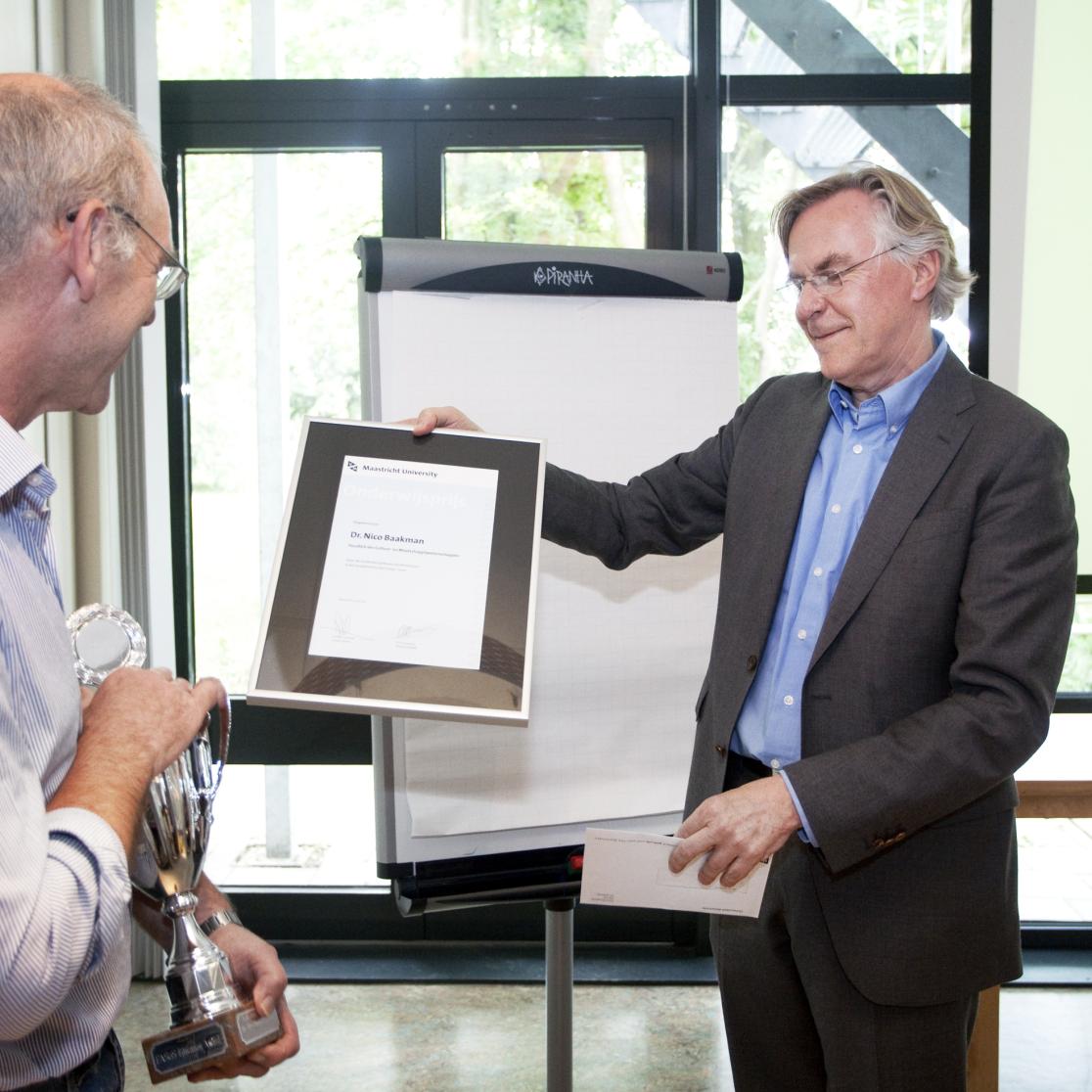Skills
Intercultural communicative competence
Intercultural communicative competence is the capacity ‘to suspend or modify some of the old cultural ways, and learn and accommodate some of the new cultural ways, and creatively find ways to manage the dynamics of cultural difference/unfamiliarity, intergroup posture, and the accompanying stress’ (Kim, 1992, p. 377).
Scales
To assess intercultural communication, cultural sensitivity and engagement with others who are different it is possible to use the Social Interactions Scale, which is a subscale from the Global Perspective Inventory. For example, one item notes that “I frequently interact with a race/ethnic group different from my own” (Research Institute for Studies in Education, 2017).
In addition, the Cultural Intelligence Scale (CQS) can be used to assess the respondent’s ability to function effectively in culturally diverse settings (Ang et al., 2007). “I am sure I can deal with the stresses of adjusting to a culture that is new to me” or “I enjoy interacting with people from different cultures” are two of the statements for which the student has to judge their own capabilities (Cultural Intelligence Center, 2005).
Rubric
The Association of American Colleges and Universities (AACU, 2005) created a value rubric to evaluate student’s learning. The intercultural knowledge and competence value rubric is used to assess knowledge, attitudes and skills from benchmark to capstone level. As an example of the knowledge element of cultural awareness students that reach the benchmark level show minimal awareness of their own cultural rules and biases. Students reaching the milestone level can identify them and recognize new perspectives about their own cultural rules and biases, whereas students can articulate insights into their own cultural rules and biases at the capstone level (https://www.aacu.org/initiatives/value-initiative/value-rubrics/value-rubrics-intercultural-knowledge-and-competence).
Teaching examples
References
Perspective-taking
Perspective-taking is the ability to understand another person’s thoughts, feelings, and inner mental states (Epley & Caruso, 2009), which generates feelings of closeness and motivates the individual to help others.
Scales
The Global Perspective Inventory has been used in the past to investigate this individual experience and the development of a global perspective. It lists items such as “I do not feel threatened emotionally when presented with multiple perspectives” or “I am open to people who strive to live lives very different from my own life style.” (Research Institute for Studies in Education,2017).
Moreover, the Perspective-Taking subscale of the Interpersonal Reactivity Index (Davis, 1980) has been developed to measure the tendency to adopt another person's point of view. One item states the following: “I try to look at everybody’s side of a disagreement before I make a decision” and another one states “before criticizing somebody, I try to imagine how I would feel if I were in their place”.
Rubric
The Association of American Colleges and Universities (AACU, 2005) created a value rubric to evaluate student’s learning. The global learning value rubric is used to assess knowledge, attitudes and skills from benchmark to capstone level. Students are at the benchmark level of perspective-taking if they can identify multiple perspectives while maintaining a value for their own positioning (such as cultural, disciplinary, and ethical). At the milestone level, students learn to analyze, evaluate and synthesize multiple perspectives. Students at the capstone level evaluate and apply diverse perspectives to complex subjects within natural and human systems in the face of multiple and even conflicting positions (https://www.aacu.org/initiatives/value-initiative/value-rubrics/value-rubrics-global-learning).
Teaching examples
References
- Association of American Colleges and Universities. (2005). Liberal education outcomes: A preliminary report on student achievement in college. https://www.aacu.org/leap
- Davis, M. A multidimensional approach to individual differences in empathy. JSAS Catalog of Selected Documents in Psychology, 1980, 10, 85.
- Epley, N., & Caruso, E. M. (2009). Perspective taking: Misstepping into others’ shoes. In K. D. Markman, W. M. P. Klein, & J. A. Suhr (Eds.), Handbook of imagination and mental simulation (pp. 295–309). New York, NY: Psychology Press
- Research Institute for Studies in Education (2017). Global Perspective Inventory: Theoretical foundations and scale descriptions. Iowa State University: Ames, IA.
Self-reflection
Self-reflection is the inspection and evaluation of one’s thoughts, feelings, and behaviour (Carver & Scheier, 1998). When self-reflection encompasses the identification of personal beliefs and values based on one’s cultural background it is possible to achieve cultural self-awareness, understood as the ability to recognise the influence of this cultural conditioning on thoughts, attitudes, and behaviour (Wernsing & Clapp-Smith, 2013). Moreover, when self-reflection is oriented to comprehend the self in interrelation with local and global communities we are referring to global self-awareness (Rhodes, 2010).
Scales
In order to reliably measure individual self-awareness, the Situational Self-awareness scale (Govern, & Marsch, 2001) can be useful. Item two of the scale states “Right now, I am conscious of my inner feelings” and item three states, “Right now, I am concerned about the way I present myself”.
In addition, the self-reflection and insight scale (Grant, Franklin & Langford, 2002) measures private self-consciousness. It list items such as “I am usually aware of my thoughts” or “I usually have a very clear idea about why I've behaved in a certain way” but also “thinking about my thoughts makes me more confused”.
Furthermore, the items one and two from the Global Learning Short Scale (Purdue University, 2020) can provide a measurement on global self-awareness; however, the psychometric properties have not yet been established. For example, item one notes, “I reflect on how my local actions toward the natural and human world can have a global impact”.
Rubric
The Association of American Colleges and Universities (AACU, 2005) created a value rubric to evaluate student’s learning. The intercultural knowledge and competence value rubric is used to assess knowledge, attitudes and skills from benchmark to capstone level. As an example of the knowledge element of cultural awareness students that reach the benchmark level show minimal awareness of their own cultural rules and biases. Students reaching the milestone level can identify them and recognize new perspectives about their own cultural rules and biases, whereas students can articulate insights into their own cultural rules and biases at the capstone level (https://www.aacu.org/initiatives/value-initiative/value-rubrics/value-rubrics-intercultural-knowledge-and-competence).
Additionally, the global learning value rubric formulates that when a student “effectively addresses significant issues in the natural and human world based on articulating one’s identity in a global context” the student reaches the capstone level for global self-awareness. The benchmark level states that the student can identify some connections between an individual’s personal and certain local and global issues (https://www.aacu.org/initiatives/value-initiative/value-rubrics/value-rubrics-global-learning).
Teaching examples
References
- Association of American Colleges and Universities. (2005). Liberal education outcomes: A preliminary report on student achievement in college. https://www.aacu.org/leap
- Carver, C. S., & Scheier, M. F. (1998). On the self-regulation of behavior. Cambridge, UK: Cambridge University Press
- Govern, J. M., & Marsch, L. A. (2001). Development and Validation of the Situational Self-Awareness Scale. Consciousness and Cognition, 10(3), 366–378
- Grant, A. M., Franklin, J., & Langford, P. (2002). The self-reflection and insight scale: A new measure of private self-consciousness. Social Behavior and Personality: an international journal, 30(8), 821-835.
- Purdue University. (2020). Assessment - Short Scales. Retrieved from https://www.purdue.edu/cie/globallearning/assessments.html
- Rhodes, T. (2010). Assessing outcomes and improving achievement: Tips and tools for using rubrics. Washington, DC: Association of American Colleges and Universities
- Wernsing, T., & Clapp-Smith, R. (2013). Developing global leaders through building cultural self-awareness. European Journal of International Management, 7(5), 535-549.
Complex problem solving
Complex problem solving is the identification and assessment of dynamic, uncertain, and fast-paced environments to take action (Zsambok, 1997). In a global community, complex problem solving entails the understanding of worldwide challenges and the use of interdisciplinary knowledge and skills to contribute to (creative) solutions (Rhodes, 2010; UCL, 2020).
Measurement
Traditionally, complex problem solving has been measured with Multiple Complex Systems Tests (e.g., MicroDYN) (Greiff, Stadler, Sonnleitner, Wolff, & Martin, 2015). An example of a Multiple Complex Systems Test is depicted here. It shows the underlying structure of a microworld of a “tailershop”. It resembles the structure of a real world retail business and helps to observe problem-solving skills (Greiff et al., 2015).
Nevertheless, to assess specifically the application of knowledge to contemporary global contexts, items 11 and 12 from the Global Learning Short Scale (Purdue University, 2020) can be useful; however, the psychometric properties have not yet been established. . For example, item twelve notes, “I use my knowledge about historical and contemporary challenges in society to formulate practical solutions”.
Rubric
The Association of American Colleges and Universities (AACU, 2005) created a value rubric to evaluate student’s learning. The problem-solving value rubric is used to assess knowledge, attitudes and skills from benchmark to capstone level. For example, the criterion “identifying strategies” states that at the capstone level a student can identify multiple approaches for solving the problem that apply within a specific context. At the benchmark level, a student “identifies one or more approaches for solving the problem that do not apply within a specific context” (https://www.aacu.org/initiatives/value-initiative/value-rubrics/value-rubrics-problem-solving).
Looking at the creative thinking value rubric and the “taking risks” aspect of it “a student stays strictly within the guidelines of the assignment” at the benchmark level. At the milestone levels, the student considers and incorporates new directions. Students that reach the capstone level “actively seek out and follows through on untested and potentially risky directions or approaches to the assignment in the final product” (https://www.aacu.org/initiatives/value-initiative/value-rubrics/value-rubrics-creative-thinking).
Teaching examples
References
- Association of American Colleges and Universities. (2005). Liberal education outcomes: A preliminary report on student achievement in college. https://www.aacu.org/leap
- Greiff, S., Stadler, M., Sonnleitner, P., Wolff, C., & Martin, R. (2015). Sometimes less is more: Comparing the validity of complex problem solving measures. Intelligence, 50, 100-113.
- Purdue University. (2020). Assessment - Short Scales. Retrieved from https://www.purdue.edu/cie/globallearning/assessments.html
- Rhodes, T. (2010). Assessing outcomes and improving achievement: Tips and tools for using rubrics. Washington, DC: Association of American Colleges and Universities
- Ucl. (2020, May 11). Global citizenship. Retrieved from https://www.ucl.ac.uk/global-citizenship-programme/what-is-global-citizenship
- Zsambok CE (1997) Naturalistic decision making: where are we now? In: Zsambok CE, Klein GA (eds) Naturalistic decision making. Lawrence Erlbaum, Mahwah, pp 3–16
Interdisciplinary skills
Interdisciplinary skills are a comprehensive set of knowledge and skills that allow individuals to understand and solve complex problems by integrating insights from different disciplines (Lattuca, Knight & Bergom, 2013).
Scales
Interdisciplinary skills can be assessed using the Brassler and Dettmers (2017) adaptation of the Self-reported Interdisciplinary Competence Scale (Lattuca, Knight & Bergom, 2013). The scale is divided into the three aspects: interdisciplinary skills, reflective behavior, and recognizing disciplinary perspectives. For example one item states, “I value reading topics outside of my discipline.” (Brassler & Dettmers, 2017).
Rubric
The boundary crossing rubric can be used to assess interdisciplinary and transdisciplinary learning. The rubric lists several aspects for the categories identification, coordination, perspective-making and learning from each other, and transformation. At the D level of identification, the student does not actively explore other perspectives. AT the C level the student shows awareness for multiple perspectives but does not include them whereas at the B level the student identifies and includes the perspectives relevant for the project. If a student reaches the highest A level he/she “can explicate for which aspects of the project he/she needs other people and plans actions to contact these other people” (Gulikers & Oonk, 2019). Taking the highest level for transformation (3) as an additional example the student “shows convincingly how (s)he weighted multiple perspectives and interests in the final product, and considers its practical and its innovative character” and “clearly explicates how to effectively inform other external people involved about the outcome of the final product” (Gulikers & Oonk, 2019).
Teaching examples
References
- Lattuca, L., Knight, D., & Bergom, I. (2013). Developing a measure of interdisciplinary competence. International Journal of Engineering Education, 29(3), 726–739.
- Brassler, M. , & Dettmers, J. (2017). How to Enhance Interdisciplinary Competence—Interdisciplinary Problem-Based Learning versus Interdisciplinary Project-Based Learning. Interdisciplinary Journal of Problem-Based Learning, 11(2).
Critical thinking
Active, persistent and careful consideration of any belief or supposed form of knowledge in the light of the grounds that support it, and the further conclusions to which it tends. (Dewey 1910: 6; 1933: 9; cf.)
If the skill is mastered it can increase the chances of producing logical conclusions to arguments or solutions to a problem. Critical thinking is often described as a metacognitive process, which consists of sub-skills like analysis, evaluation and inference (Dwyer, Hogan & Stewart, 2014).
Scale/measurement
Critical thinking skills of students can be measured by using the Watson-Glaser Critical Thinking Appraisal test with its four different but interdependent subtests : inferences, recognition of assumptions, deduction, interpretation, and evaluation of arguments (Hassan & Madhum, 2007). A practice test of the UK edition can be found here.
Additionally, the Halpern Critical Thinking Assessment is a standardized test to measure critical thinking skills (Butler et al., 2012). Verbal reasoning skills; argument analysis skills; skills in thinking as hypothesis testing; using likelihood and uncertainty; and decision-making and problem-solving skill are the five subscales measured by the assessment. For example, respondents are asked to formulate questions they need to have answered in order to give an advice to a friend on which weight-loss program to choose out of two. To evaluate the answer the assessor could check: “Did the respondent’s answer indicate that the respondent wants to know how many people lost this much weight.”, and “Did the respondents ask about the number of people who maintained the weight loss for a year or more” (Butler et al., 2012).
Rubric
The Association of American Colleges and Universities (AACU, 2005) created a value rubric to evaluate student’s learning. The critical thinking value rubric is used to assess knowledge, attitudes and skills from benchmark to capstone level. It is divided into acquiring competencies, taking risks, solving problems, embracing contradictions, innovative thinking, as well as connecting, synthesizing and transforming. The capstone level for embracing contradictions notes that the student “integrates alternate, divergent, or contradictory perspectives or ideas fully” whereas the student only “acknowledges (mentions in passing) alternate, divergent, or contradictory perspectives or ideas” at the benchmark level (https://www.aacu.org/initiatives/value-initiative/value-rubrics/value-rubrics-critical-thinking).
Moreover, the information literacy value rubric lists aspects relevant to assess critical thinking.
For example, the item of evaluating information and its sources critically notes that at the capstone level the student “chooses a variety of information sources appropriate to the scope and discipline of the research question. Selects sources after considering the importance (of the multiple criteria used (such as relevance to the research question, currency, authority, audience, and bias or point of view).” A student at the benchmark level would consider a few information sources and use limited criteria (https://www.aacu.org/initiatives/value-initiative/value-rubrics/value-rubrics-information-literacy).
Teaching example
References
- Association of American Colleges and Universities. (2005). Liberal education outcomes: A preliminary report on student achievement in college. https://www.aacu.org/leap
- Butler, H. A., Dwyer, C. P., Hogan, M. J., Franco, A., Rivas, S. F., Saiz, C., & Almeida, L. S. (2012). The halpern critical thinking assessment and real-world outcomes: cross-national applications. Thinking Skills and Creativity, 7(2), 112–121. https://doi.org/10.1016/j.tsc.2012.04.001
- Dwyer, C. P., Hogan, M. J., & Stewart, I. (2014). An integrated critical thinking framework for the 21st century. Thinking skills and Creativity, 12, 43-52.
- Hassan, K. E., & Madhum, G. (2007). Validating the watson glaser critical thinking appraisal. Higher Education: The International Journal of Higher Education and Educational Planning, 54(3), 361–383.
Attitudes/Values
Commitment to inclusion
Commitment to inclusion is understood as an approach to education that is oriented to overcome ‘barriers to all forms of marginalization, exclusion, and underachievement’ (Ainscow, Booth, Dyson, 2006, p.5). Consequently, inclusion is a process of ‘increasing learning and participation for all students’ (Booth & Ascow, 2002, p.3).
Measurement
In most recent studies, inclusion has been measured with CSIE: Index for Inclusion (Booth & Ainscow, 2002). The instrument involves an evaluation of the production of inclusive policies within the organization, the evolution of inclusive practice, and the creation of inclusive cultures. Each dimension lists several indicators that can be checked. For example, the dimension A “creating inclusive practices” lists some of the following items “everyone is made to feel welcome”, “staff and students treat one another with respect”, and “all local communities are involved in the school.” (Booth & Ainscow, 2002).
Rubric
The University of California, Berkeley developed a rubric for assessing candidate contributions to diversity, equity, inclusion, and belonging (DEIB). The rubric entails the three dimensions: Knowledge about DEIB, track record in advancing DEIB and plans for advancing DEIB. One item from the knowledge dimension for a low score is “little demonstrated awareness of underrepresentation, or of differential experiences, of particular groups in higher education or in their discipline. May use vague statements such as ‘the field of History definitely needs more women’ without offering further examples or specifics.” whereas a high score item is “understands the challenges faced by underrepresented individuals, and the need for all students and faculty to work to create an equitable and inclusive environment for all” (https://ofew.berkeley.edu/recruitment/contributions-diversity/rubric-assessing-candidate-contributions-diversity-equity).
Teaching examples
References
- Ainscow, M. Booth, T., Dyson, A. (2006) Improving schools, developing inclusion. London: Routledge.
- Booth, T. & Ainscow, M (2002) Index for Inclusion: developing learning and participation in schools.
Respect
Respect refers to an attitude that demonstrate esteem, regard and concern to an individual or entity (“Respect”, 2020). Respect builds on social tolerance, which refers to ‘the extent of recognition and acceptance of differences, willingness to grant equal rights, and refraining from openly intolerant attitudes’ (Zanakis, Newburry & Taras, 2016).
Measurement
A recent and extensive measurement to assess social tolerance is the Global Social Tolerance Index (Zanakis, Newburry & Taras, 2016) which incorporates gender, minority, immigrant, and religion tolerance dimensions. “Men make better political leaders” or “university is more important for a boy than for a girl” are two items of the gender dimension.
Rubric
Utrecht University has created a matrix with assessment rubrics of interdisciplinary learning goals and competencies. The category collaboration of the rubric lists the following descriptions for one of the items: “respects and trusts the expertise of some of the team members” at the novice level, whereas most team members are respected and trusted at the intermediate level and all at the mastery level respectively. Another item lists the following descriptions: “Is often too submissive or dominant in the collaboration process” at the novice level, “listens to others but does not acknowledge whether he/she understands the other” at the intermediate level and “listens with an open mind to other personal and/or disciplinary perspectives” at the mastery level. An additional description for the novice level of an item is “Can be rude to peers” opposed to the mastery level description being: “Aware of and sensitive towards the position of other team members and sees how disagreements can occur”
Teaching examples
References
- Deardorff, D. K. (2019). Manual for developing intercultural competencies: Story circles. Routledge. Download from: https://unesdoc.unesco.org/ark:/48223/pf0000370336
- Respect. (2020). APA Dictionary of Psychology. Retrieved from https://dictionary.apa.org/respect
- Zanakis, S., Newburry, W. & Taras, V. (2016) Global Social Tolerance Index and multi-method country rankings sensitivity. J Int Bus Stud (47), 480–497.
Humility
Humility is the quality of maintaining a low focus on the self, an accurate (not over or underestimated) sense of one’s accomplishments and worth, and an acknowledgment of one’s limitations, imperfections, mistakes, and gaps in knowledge (“Humility”, 2020). A global citizen benefits from intellectual and cultural humility, the first one involves the ability to embrace one's beliefs while being open to alternative evidence (Krumrei-Mancuso & Rouse, 2016) and the latter, represent the ability to maintain an interpersonal stance that is other-oriented concerning aspects of cultural identity (Hook, Davis, Owen, Worthington & Utsey, 2013).
Scale
To assess general humility judgments from a third party perspective, the Relational Humility Scale (Davis, 2010) can be of considerable help. For example, “he/she has a humble character”, “he/she thinks of him/herself as overly important”, or “he/she is self-aware” are items of this scale.
To date the Comprehensive Intellectual Humility Scale (Krumrei-Mancuso & Rouse, 2016) has been developed to measure intellectual humility, however, an instrument to measure cultural humility outside the therapy context is scarce. The scale is divided into four subscales: Independence of intellect and ego, openness to reviving one’s viewpoint, respect for others’ viewpoints, and lack of intellectual overconfidence. For example, one item of the subscale respect for others’ viewpoints notes, “I am willing to hear others out, even if I disagree with them”. A second example item states “Even when I disagree with others, I can recognize that they have sound points” (Krumrei-Mancuso & Rouse, 2016).
Rubric
To evaluate cultural humility the rubric created by Luctkar-Flude and colleagues (2020) can be considered as an example. They constructed a rubric to assess the competence of applying principles of cultural humility when asking health assessment questions to establish a therapeutic relationship. Scoring at the level of a competent learner, they “demonstrate non-judgmental attitude during all interactions and a respectful, client-centred approach during all interactions” whereas they only do this sometimes at the intermediate learner level and they do not do it at the novice learner level (Luctkar-Flude, et al., 2020).
Teaching examples
References
- Bu, H., & Duan, W. (2018). A single-session positive cognitive intervention on first-year students’ mental health: Short-term effectiveness and the mediating role of strengths knowledge. Journal of American College Health. http://dx.doi.org/10.1080/07448481.2018.1497639
- Davis, D. (2010). Relational Humility (Doctoral dissertation). Retrieved from https://scholarscompass.vcu.edu/etd/2293/?utm_source=scholarscompass.vcu.edu%2Fetd%2F2293&utm_medium=PDF&utm_campaign=PDFCoverPages
- Hook, J. N., Davis, D. E., Owen, J., Worthington Jr., E. L., & Utsey, S. O. (2013). Cultural humility: Measuring openness to culturally diverse clients. Journal of Counseling Psychology®. doi:10.1037/a0032595
- Humility. (2020). APA Dictionary of Psychology. Retrieved from https://dictionary.apa.org/humility
- Krumrei-Mancuso, E. J., & Rouse, S. V. (2016). The development and validation of the comprehensive intellectual humility scale. Journal of Personality Assessment, 98(2), 209-221.
- Luctkar-Flude, M., Tyerman, J., Ziegler, E., Carroll, B., Shortall, C., Chumbley, L., & Tregunno, D. (2020). Developing a sexual orientation and gender identity nursing education toolkit. The Journal of Continuing Education in Nursing, 51(9), 412-419.
- Niemiec, R. M. (2018). Character strengths interventions: A field guide for practitioners. Boston, MA: Hogrefe Publishing
Curiosity
Curiosity is the impulse or desire to investigate, observe, and gather information, particularly in novel situations (“Curiosity”, 2020). It is an internal motivation, which becomes key to encourage active and exploratory learning spontaneously. There are different types or dimensions of curiosity. Consensus is reached about two basic types of curiosity: cognitive/epistemic and sensory/perceptual. Cognitive curiosity is the desire for new information, while sensory curiosity is the desire for new sensations and thrills.
Scales
There are different scales to measure curiosity, based on the different dimensions. A comprehensive self-report is the Five-Dimensional Curiosity Scale (Kashdan et al., 2018). This instrument captures five distinct factors in curiosity: joyous exploration (the desire to seek out new knowledge); deprivation sensitivity (the need to resolve a lack of information); stress tolerance (the willingness to embrace the distress that arises from exploring new events); social curiosity (an interest in acquiring information on how other people think, feel and behave, and thrill-seeking (the willingness to take risks to acquire varied and complex experiences) (Kashdan et al., 2018). “I view challenging situations as an opportunity to grow and learn”, and ”I enjoy learning about subjects that are unfamiliar to me.” are two items of the joyous exploration factor. One item of the overt social curiosity factor states, “When talking to someone, I try to discover interesting details about them”.
Rubric
The Association of American Colleges and Universities (AACU, 2005) created a value rubric to evaluate student’s learning. The intercultural knowledge and competence value rubric is used to assess knowledge, attitudes and skills from benchmark to capstone level. Students reaching the Capstone level of the attitude element curiosity can ask complex questions about other cultures and integrate multiple perspectives to answer these questions. Opposed to students being at the benchmark level and stating minimal interest in learning more about other cultures (https://www.aacu.org/initiatives/value-initiative/value-rubrics/value-rubrics-intercultural-knowledge-and-competence).
References
- Association of American Colleges and Universities. (2005). Liberal education outcomes: A preliminary report on student achievement in college. https://www.aacu.org/leap
- Curiosity. (2020). APA Dictionary of Psychology. Retrieved from https://dictionary.apa.org/curiosity
- Kashdan, T. B., Stiksma, M. C., Disabato, D. J., McKnight, P. E., Bekier, J., Kaji, J., & Lazarus, R. (2018). The five-dimensional curiosity scale: Capturing the bandwidth of curiosity and identifying four unique subgroups of curious people. Journal of Research in Personality, 73, 130-149.
UM Examples










